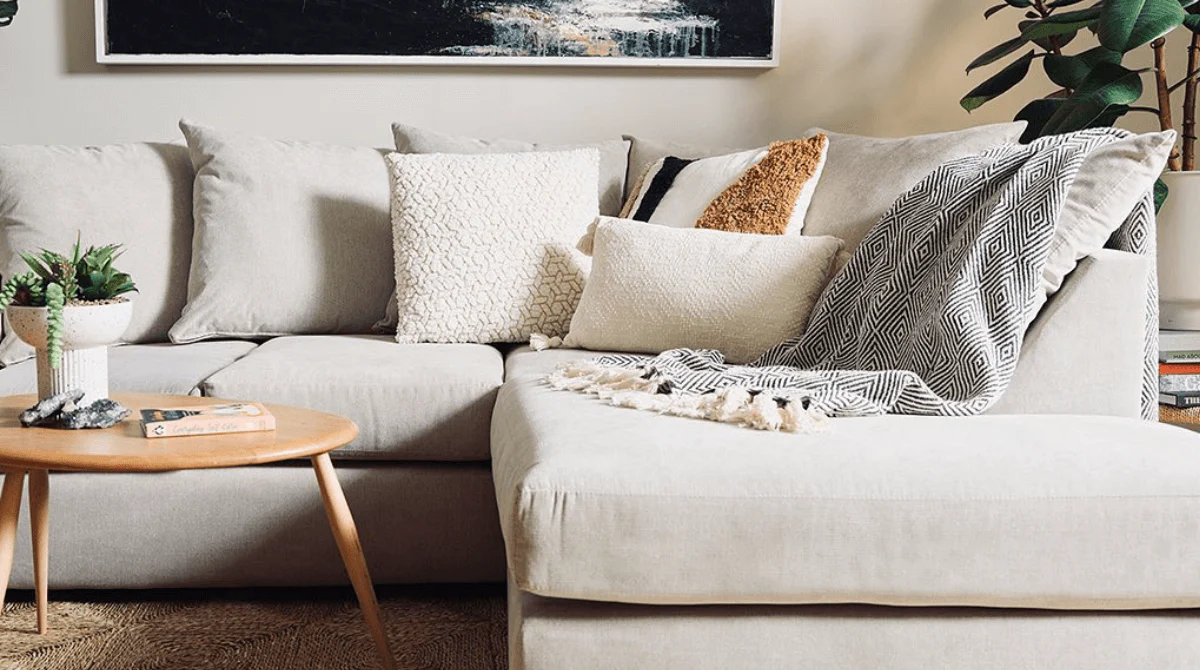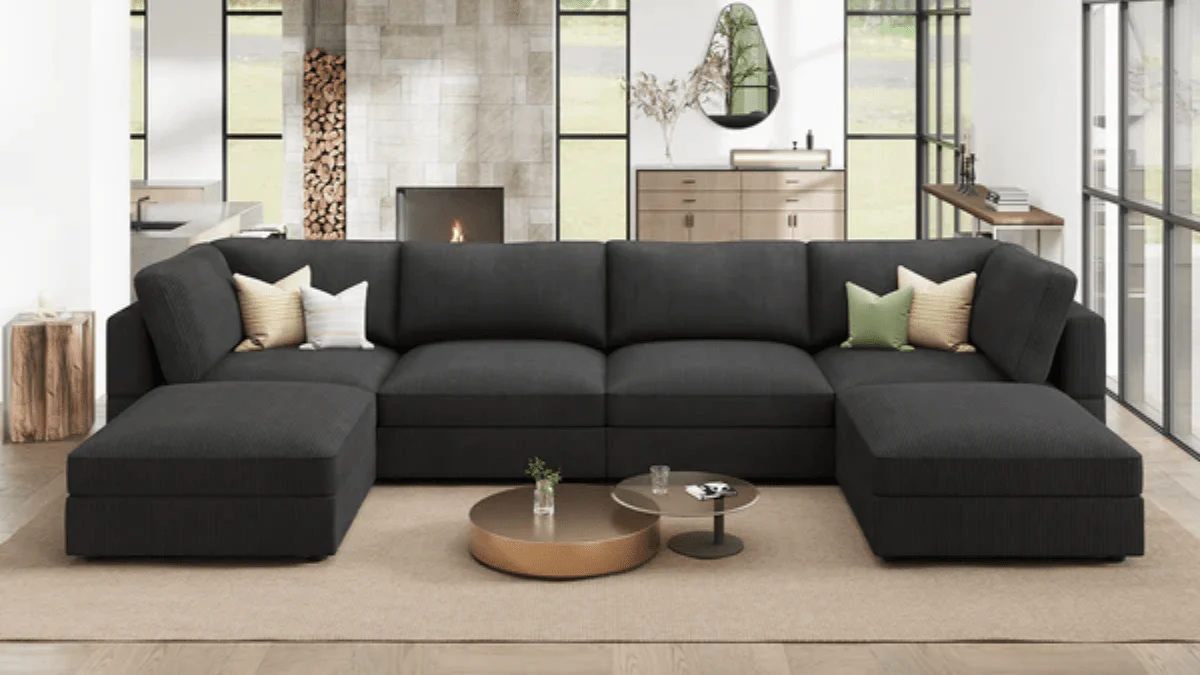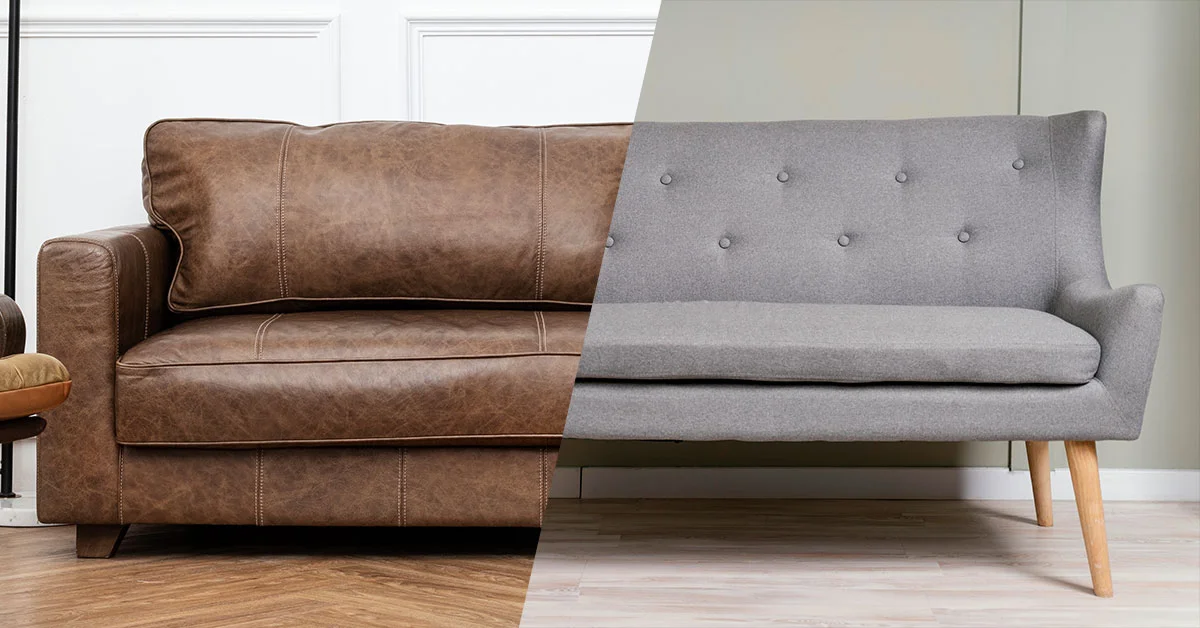Choosing the perfect corner sofa is a major decision when furnishing your living space. A corner sofa not only provides ample seating but also defines the layout and aesthetics of your room. The primary decision when purchasing a corner sofa is deciding whether a left hand or right hand configuration best suits your space. This guide will help you understand the factors involved and ensure you make an informed choice.
Understanding Left Hand and Right Hand Corner Sofas

A corner sofa can be left hand facing or right hand facing. The orientation refers to the position of the longer side when you are looking directly at the sofa. If the extended section is on your left it is a left hand facing sofa. If it is on your right it is a right hand facing sofa. This distinction might seem simple but getting it wrong can make a sofa unsuitable for your room.
Start with the Layout of Your Room

Begin by assessing your room’s layout. The position of doors, windows radiators and other fixed elements will heavily influence your decision. For example if your room has a large window on the left hand wall you might prefer a right hand facing sofa to avoid blocking the light. Similarly doors should remain unobstructed for smooth movement within the space.
A thorough evaluation of your room’s dimensions and layout can save you from purchasing a sofa that doesn’t fit well or feels out of place. Take note of any architectural features that might affect the placement of your sofa.
Measure Your Space Carefully

Accurate measurements are essential when choosing a corner sofa. Use a tape measure to determine the available length and depth in your room. This will help you avoid purchasing a sofa that overwhelms the space or leaves insufficient room for other furniture.
You can use painter’s tape to outline the sofa’s dimensions on your floor. This gives a clear visual representation of how the sofa will occupy the room. Ensure there is enough space for walking around the sofa and for opening doors and windows comfortably.
Consider Traffic Flow

The natural movement within your room is another important factor. A poorly placed sofa can disrupt the flow of traffic and make the space feel cramped. Observe how you and others move around the room. Identify key pathways and ensure your chosen sofa orientation doesn’t obstruct them.
For example if the entrance to the room is on the right and leads towards the seating area on the left a left hand facing sofa will allow for an uninterrupted path.
Think About Your Room’s Focal Point

Every room has a focal point. It might be a fireplace, a television or a large window with a beautiful view. Your corner sofa should enhance this focal point not compete with it. If the TV is mounted on the right hand wall a right hand facing sofa may be the better choice ensuring all seats offer a good viewing angle.
Similarly if your room has an open plan design you might use the sofa to create a natural divide between spaces. Choose an orientation that helps define the boundaries without compromising functionality.
Prioritise Comfort and Functionality

Your lifestyle plays a crucial role in determining the right sofa. Think about how you intend to use it. Do you need a sofa that accommodates a large family? Do you entertain guests frequently? Or do you prefer a cosy corner to relax with a book?
A sofa that fits your lifestyle will enhance your comfort and make the space more functional. For families choose a sofa with durable upholstery and ample seating. For smaller households a compact design with additional storage might be more appropriate.
Explore Modular Sofas for Flexibility

If you’re unsure about the orientation or foresee changes in your living arrangement consider modular sofas. These versatile designs allow you to rearrange the sections to form either a left hand or right hand configuration. Modular sofas offer the flexibility to adapt to different spaces and needs over time.
Choose the Right Style and Colour

Style and colour are significant when selecting a corner sofa. The design should complement your existing décor and reflect your personal taste. For modern interiors sleek and minimalist designs work well. Traditional spaces may benefit from more ornate and classic styles.
Neutral colours like grey beige and cream are versatile and timeless. They can be easily paired with different accent colours through cushions and throws. Bold colours or patterns can make a statement but may limit your options if you decide to redecorate in the future.
Test Before You Buy
If possible visit a showroom to test the sofa. Sit on it to evaluate its comfort and support. Check the quality of the materials and construction. A good sofa should have a sturdy frame, comfortable cushions and durable upholstery. Testing the sofa in person ensures it meets your expectations.
Account for Delivery and Assembly
Before finalising your purchase ensure the sofa can be delivered and assembled easily. Measure doorways, staircases and lifts to confirm the sofa can be transported into your home without issues. Some corner sofas come in sections making them easier to manoeuvre but it’s always best to double check.
Invest in Quality and Durability
A corner sofa is a significant investment so prioritise quality and durability. Look for sofas made with hardwood frames and high density foam cushions for long lasting comfort and support. Fabrics should be resistant to wear and stains especially if you have pets or children.
High quality materials may cost more initially but they ensure your sofa remains in excellent condition for years making it a worthwhile investment.
Consider Future Needs
When choosing a corner sofa, think about its long term suitability. Your needs may evolve over time so opt for a design that offers versatility. Modular sofas and neutral colours can adapt to changes in your living space or décor.
Understanding RAF and LAF in Sectionals

If you’ve been looking at sectionals you may have seen the acronyms RAF and LAF in product descriptions like “LAF Loveseat” “Corner Wedge” “Armless Chair” or “RAF Chaise.” While the acronyms may seem cryptic, learning their simple meaning will help you choose the correct sectional configuration.
RAF stands for “Right Arm Facing” and LAF stands for “Left Arm Facing.” A single piece of a sectional often has only one arm or no arm at all. RAF and LAF are used to describe whether the arm is on the right side or left side of the piece and whether the piece is on the right or left side of the sectional when you’re facing it.
Keeping this difference in mind will help you choose the right sectional configuration for your space. You can also use the AFW space planner to make sure that your sectional configuration fits nicely.
FAQs
- What is the main difference between a left hand and a right hand corner sofa?
The orientation is determined by the placement of the longer section when facing the sofa directly. Left hand sofas have the extended part on the left while right hand sofas have it on the right.
- How can I decide which orientation suits my room?
Assess your room layout including doors windows and traffic flow. Choose an orientation that complements these elements without blocking pathways or light.
- What if I buy the wrong orientation?
To avoid this carefully measure your space and visualise the sofa’s placement using tape or software tools. Some retailers may allow exchanges but this varies.
- Are modular sofas a good alternative?
Yes modular sofas offer flexibility as they can be rearranged to suit your space allowing you to switch between left hand and right hand configurations as needed.
- Does the size of the room affect the choice?
Absolutely. For smaller rooms ensure the sofa doesn’t dominate the space. In larger rooms either orientation can work as long as it aligns with the overall layout.
- How do I match my corner sofa with the existing décor?
Choose colours and styles that complement your décor. Neutral tones work well with most interiors while bold colours can create a focal point.
- What should I look for in terms of durability?
Opt for sturdy frames, high density foam cushions and durable upholstery fabrics. These features ensure the sofa withstands daily use over time.
- Can corner sofas include storage options?
Yes many corner sofas come with built in storage compartments making them ideal for smaller spaces where extra storage is needed.
- Should I prioritise comfort over style?
Both are important but comfort should take precedence as the sofa will be used daily. Ensure it provides proper support and suits your needs.
- How do I ensure proper delivery and assembly?
Measure all access points in your home including doorways and staircases. Confirm with the retailer if the sofa comes in sections for easier transport.
Conclusion
Choosing the perfect corner sofa requires careful consideration of your room’s layout, your lifestyle and your aesthetic preferences. By understanding the difference between left hand and right hand configurations and evaluating your space thoroughly you can select a sofa that fits seamlessly into your home.
Remember to prioritise comfort functionality and quality. A well chosen corner sofa not only enhances your living space but also becomes a cherished part of your home for years to come. Take your time exploring your options and make a decision that brings both style and comfort to your living area.





